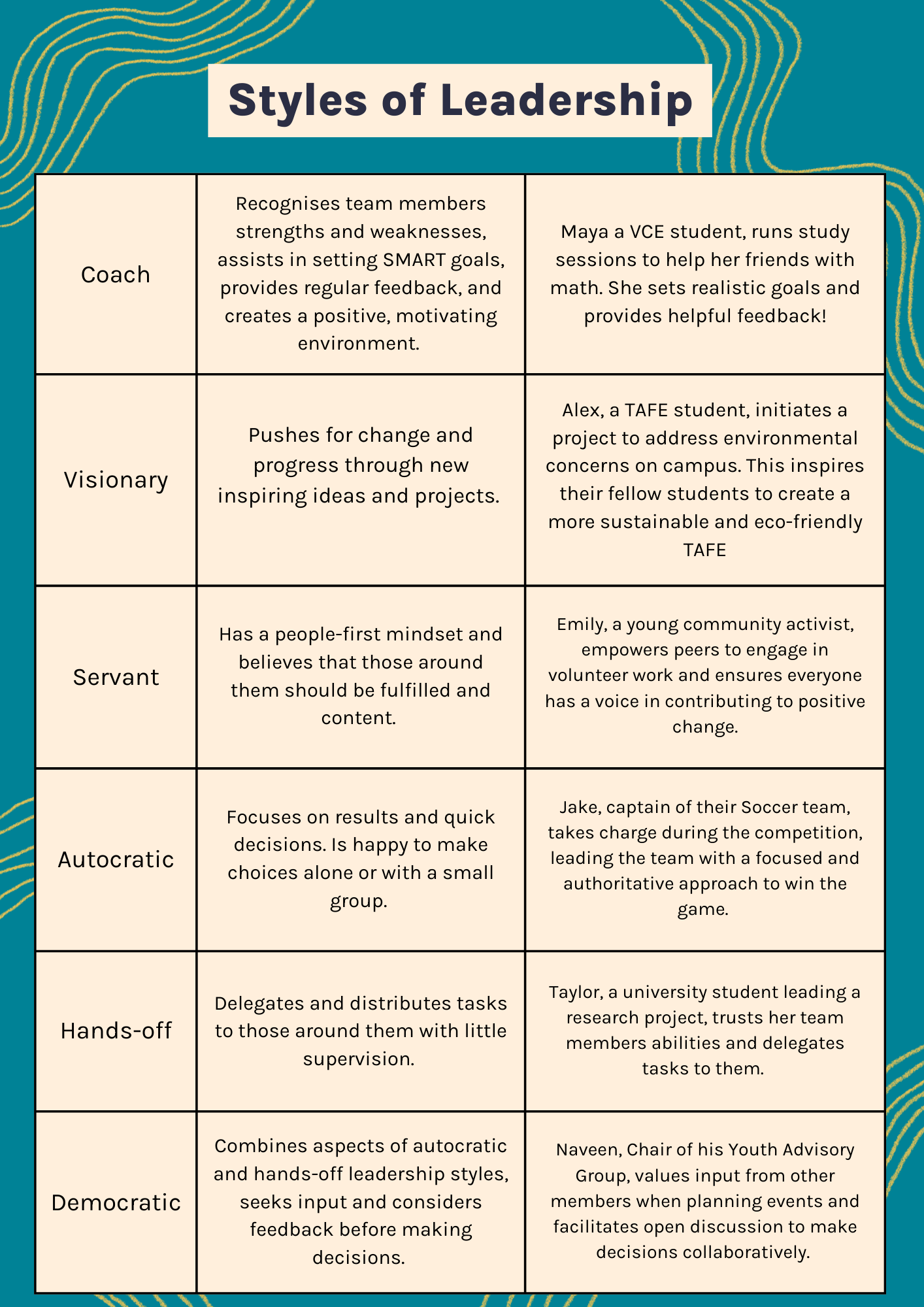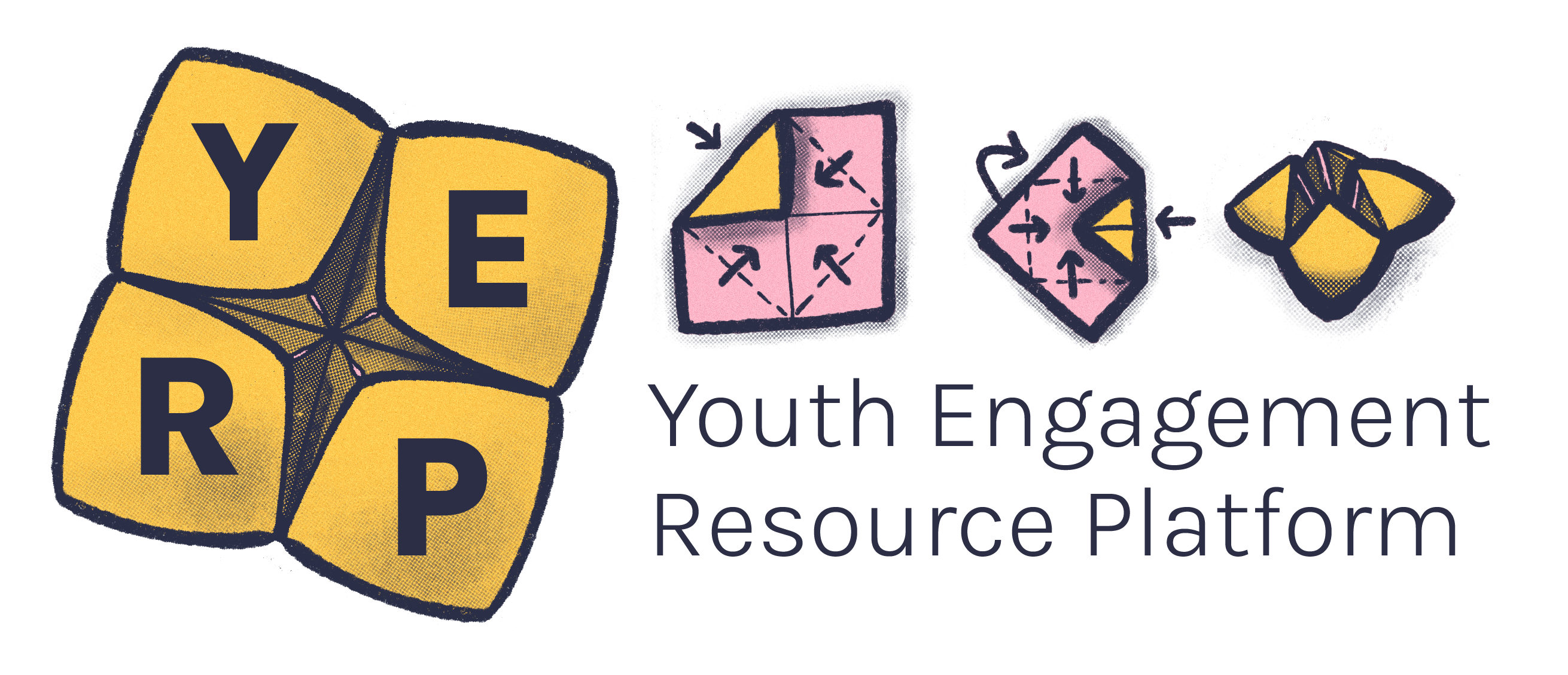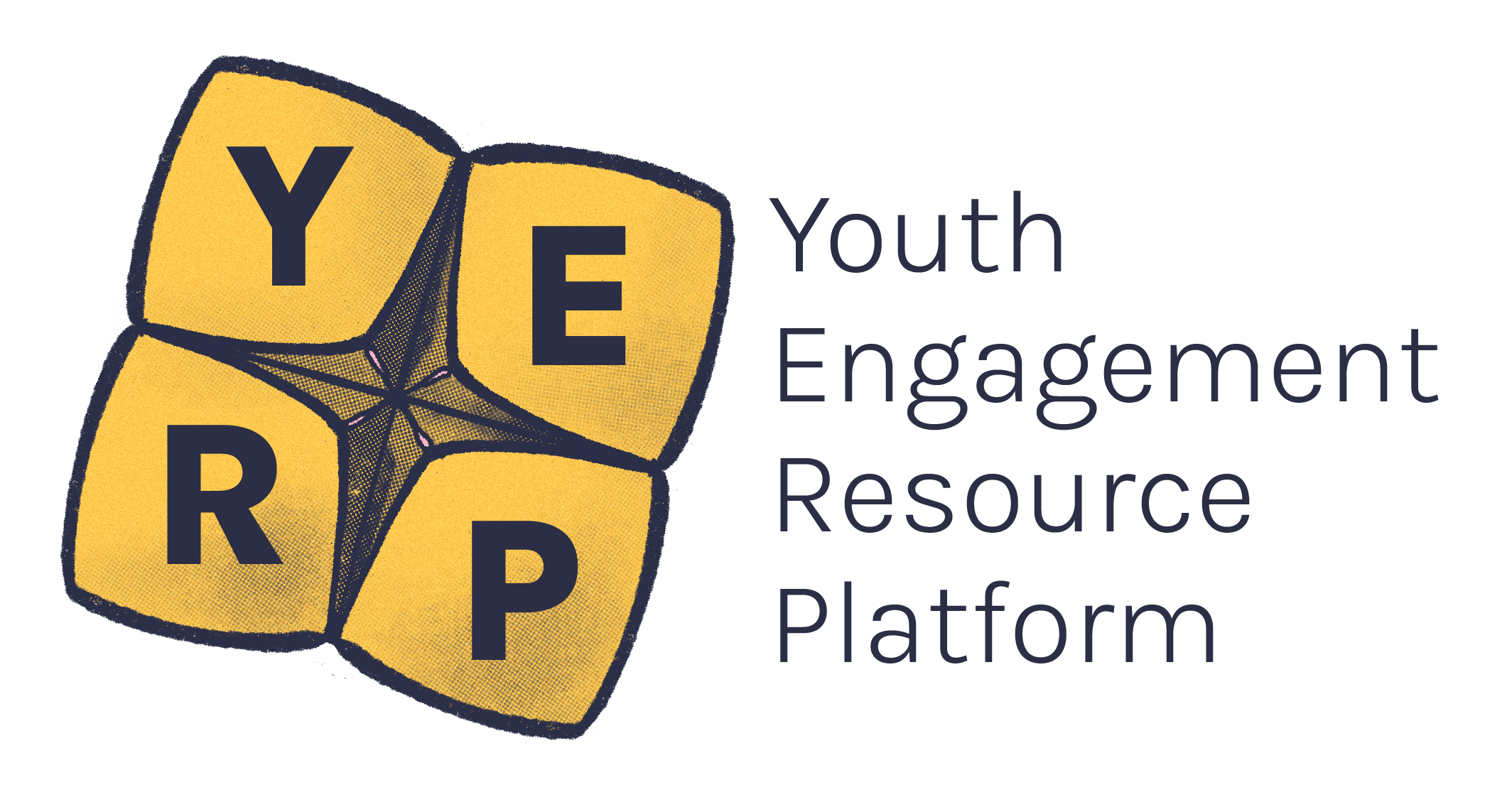All around the world, young people are acting as positive forces for change and demonstrating outstanding leadership. It’s a wonderful thing to want to make a difference in the world around you and often this starts by being a good leader.
But what does it mean for someone to be a good leader or a positive role model?
This resource talks about:
- What makes a good role model
- How to grow as a leader
- How to learn from mistakes.
A role model is defined as, ‘A person who someone admires and whose behaviour they try to copy.’1
- Role models inspire and motivate those around them by acting in ways that people find admirable and even want to be like.2
- There are role models across many different areas; sports, entertainment, education, health. Just think of Sam Kerr from the Matildas or Taylor Swift in her music!
- Often people have local community members that they look up too as well. This could be a teacher, sports coach or even someone that you follow on social media.
Who are the people who inspire you in your life?
- What is it you admire about them?
- Is it their talent or passion?
- Is it their values and the way they live their life?
- Or is it their compassion towards others?
There are lots of different traits that make someone a good role model but broadly speaking, a role model possesses qualities that set them apart and draw people to them.
These qualities could be:
Integrity
They do the right thing even when people aren’t watching. A good role model has moral principles that they live by. This could mean going the extra mile at sports training or speaking up for someone or a cause at your place of work or study.2
Empathy
A good role model cares for and tries to understand the people around them. They actively try to learn and understand others’ points of view.2
Resilience
In life, we all experience failure and setbacks. But it’s cool to see someone who has experienced a setback, rise from their failure, and overcome adversity.
Ambition
People who are role models, have a clear goal and vision for their life and the world around them. It’s motivating to watch someone achieve their goals as they pave the way forward for others.
Positivity and optimism
Role models often maintain a positive or optimistic take on life, even when times are tough. This helps others to feel motivated and uplifted.2
These are only a few qualities that role models have! Overall, a role model is someone that people want to follow, which often puts them into position of leadership.
Two young people speaking at a podium.

Leadership is about having influence. Leadership exists when someone is in position of power (either formally or informally), and they use their influence to guide those around them to a goal.3
Throughout history there have been leaders that have used their influence for good and those with influence that haven’t.
A good leader uses their talents and abilities to serve those around them and make the world a better place.3
Remember though, that everyone (including you) has influence!
We are leaders in our own way, and we should use our influence to make the world a better place.3
Sometimes, people need to be given the tools and knowledge to harness their inner leader and there are so many wonderful programs, workshops, books, and resources to help you develop your style of leadership and give you valuable skills to be the best leader you can be.
Leadership can look and sound different for each person. Consider what kind of leader you would like to be and your leadership style.
Case Study: Young Leaders Program
The YDAS ‘Young Leaders’ program is a free leadership program for young Victorians who identify as having a disability. It gives At YACVic we use 'identity first language'. Identity first language is about pride and autonomy and many people chose to use this language when talking about themselves. The other way that people may refer to themselves is 'person first language' such as a 'person with a disability'. This places the focus on the person and deemphasises disability. It’s a personal choice what language a person uses - if you aren't sure, just ask!disabled young people the chance to grow their leadership and advocacy skills, gain confidence to work in a team and access opportunities.
This is a list of some of the different styles of leadership, which leadership style do you think best describes you2?
A table listing different leadership styles

As leaders and as people, we’re bound to make mistakes. Everyone makes mistakes from time to time, it’s an inherent part of being human. What’s important is how we handle and learn from our mistakes. A crucial part of being a good leader is the ability to acknowledge when you make a mistake and learn from it.
Here are three tips for next time you make a mistake.
- Own your mistakes: Acknowledge it and take responsibility for the part you played.
- Reflect and learn: Think back to the situation and understand what went wrong, think about how you can avoid this in the future.
- Move forward: Some of the greatest success stories were originally failures. It is important to dust yourself off and keep going.
By owning our mistakes and reflecting on the lessons they offer we can move forward with resilience to transform our setbacks into stepping stones.
Do your best!
Being a leader and role model is a lifelong task. It takes a lot of time and effort, but it’s important. Keep on doing your best and trying to create change. You’ve got this!
“As the young leaders of tomorrow, you have the passion and energy and commitment to make a difference.”
–Ban Ki-Moon, former Secretary General of the United Nations
- Cambridge Dictionary. (2023). Role model. https://dictionary.cambridge.org/dictionary/english/role-model
- Mind Tools. (n.d). How to Be a Good Role Model. https://www.mindtools.com/a7y1ja8/how-to-be-a-good-role-model
- Monika, M. (11 April 2022). Why Influence Is An Important Leadership Quality and more... https://www.linkedin.com/pulse/why-influence-important-leadership-quality-more-monika-malan/
- Indeed. (2023). 10 Common Leadership Styles. https://au.indeed.com/career-advice/career-development/10-common-leadership-styles





